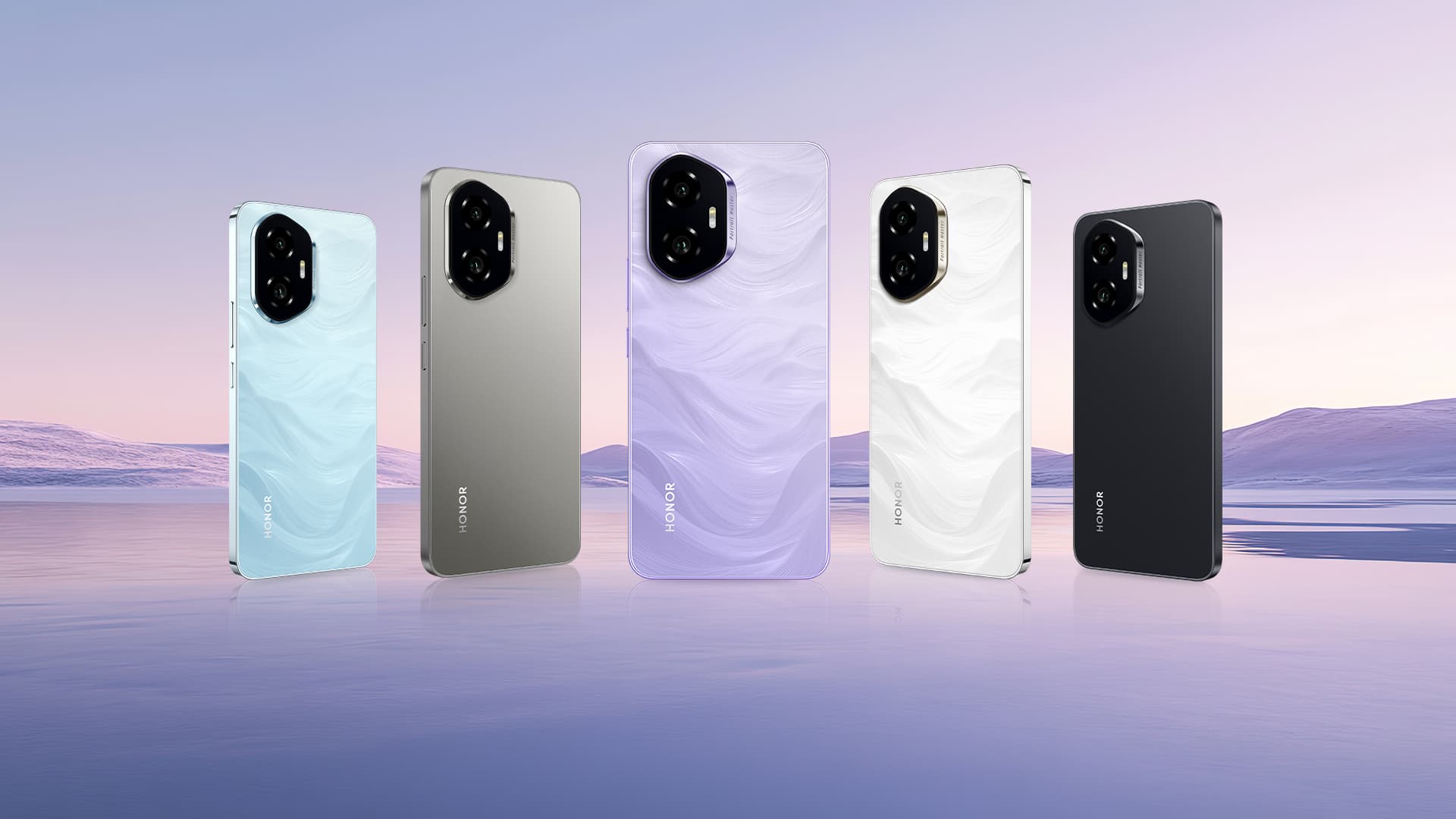Camera comparison: iPhone 11 Pro vs. Galaxy Note 10 vs. Google Pixel 3 vs. Huawei P30 Pro
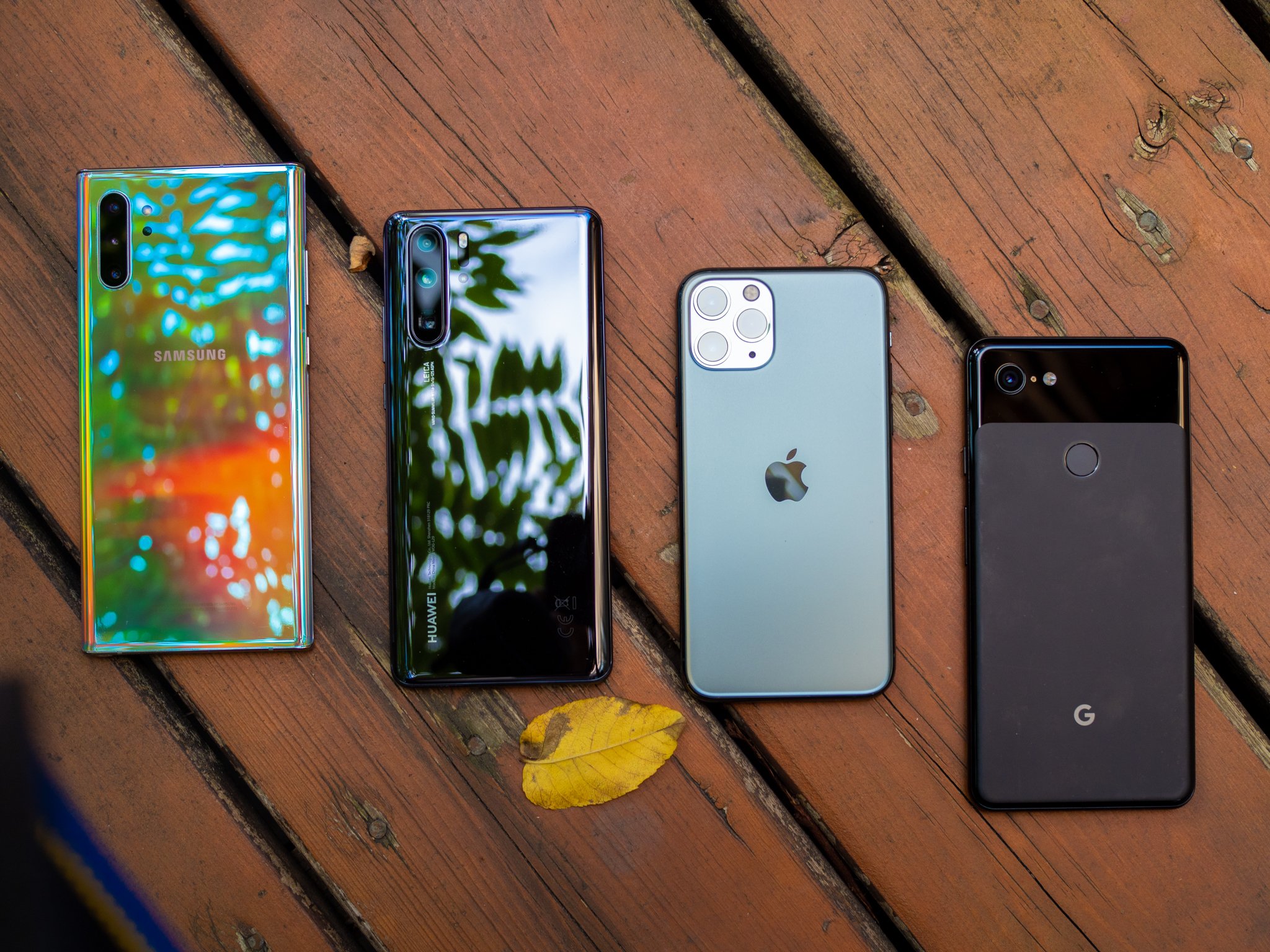
Photography is one of the biggest battlegrounds for comparing high-end smartphones, and there are some great choices out there — both with the established Android players, and of course the new iPhone 11 Pro. To see how the best smartphone cameras perform, we got out there and tested them: with the iPhone 11 Pro going up against the Galaxy Note 10, Google Pixel 3 and Huawei P30 Pro.
With staggered release cycles, we know there's never going to be a perfect time to compare multiple phones. To that point, the Pixel 3 and P30 Pro are included in this comparison even with the Google Pixel 4 on the horizon and Mate 30 Pro having just been announced. Future comparisons will certainly include them.
For now, we have these four phones with cameras that are well regarded as the best of the best. Here's how they compare.
Note: The phones are, in order left to right and top to bottom: iPhone 11 Pro, Galaxy Note 10, Google Pixel 3, Huawei P30 Pro. In the comparison shots below with telephoto and wide-angle shots, the Pixel is dropped but the other three remain in the same order.
Daylight
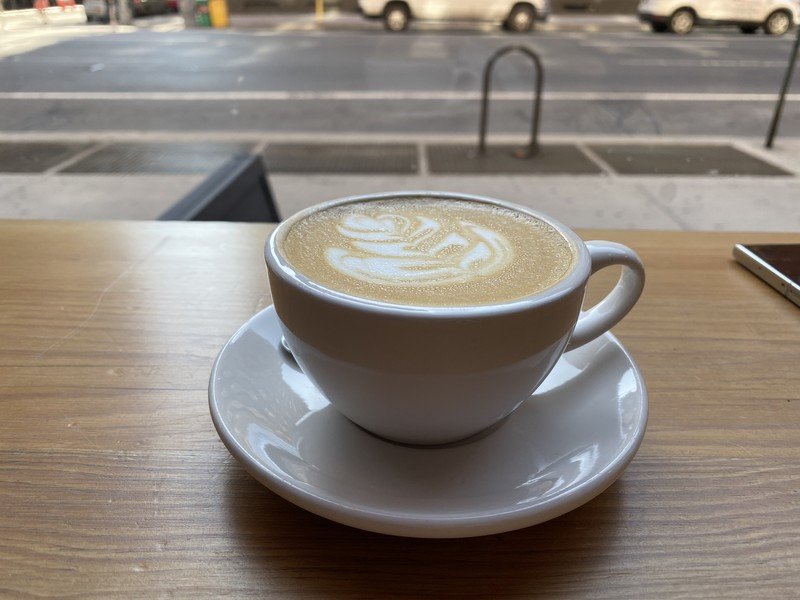
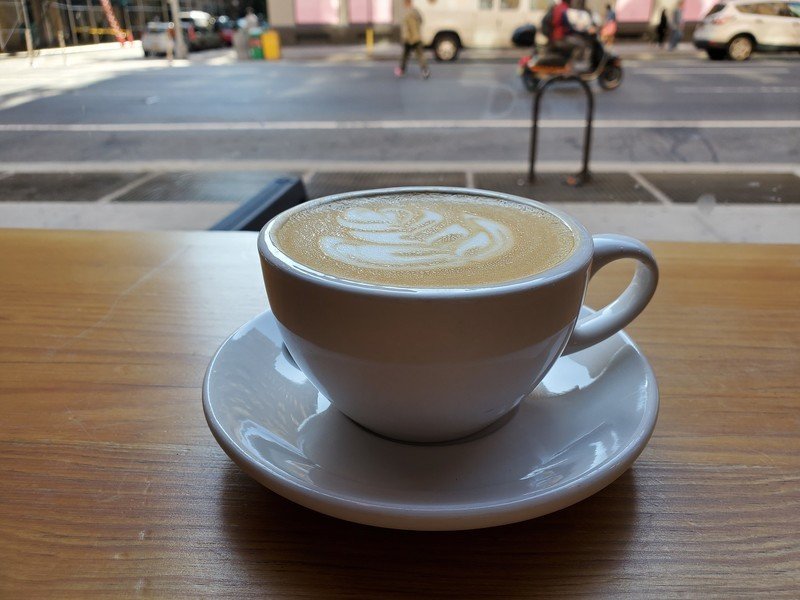

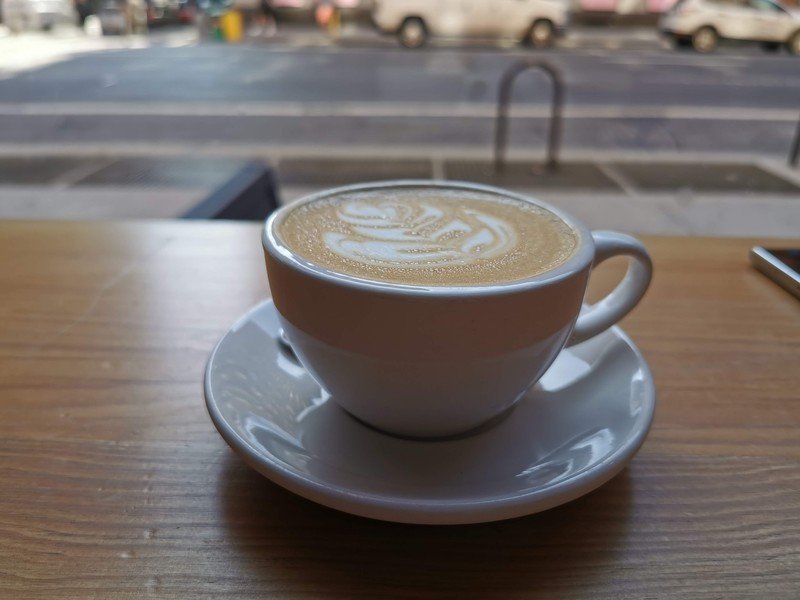
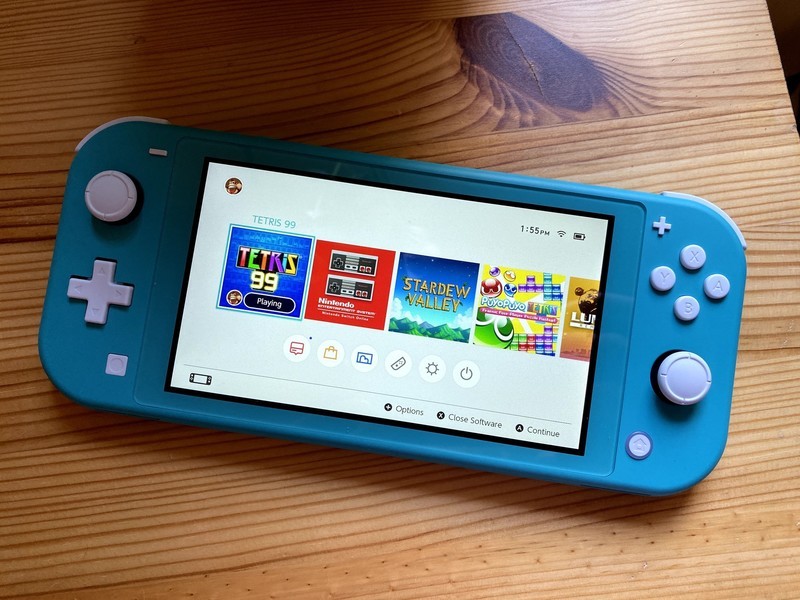
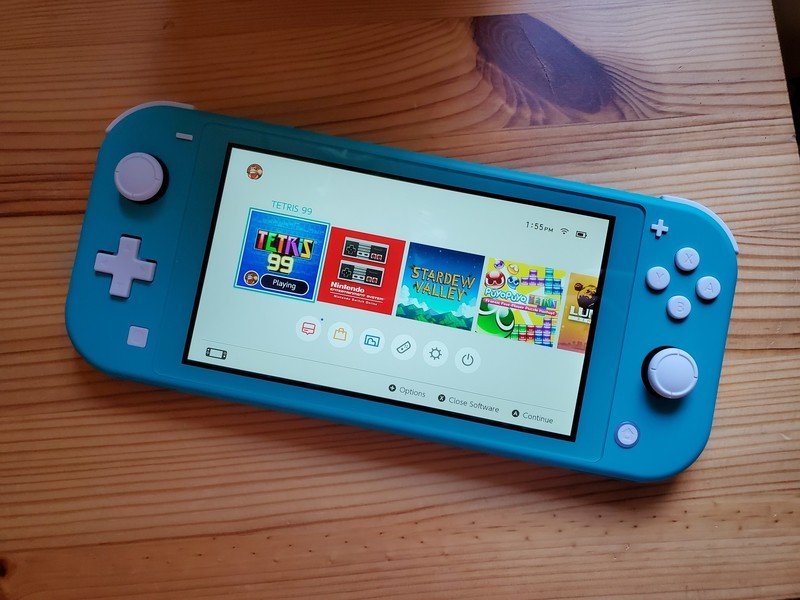
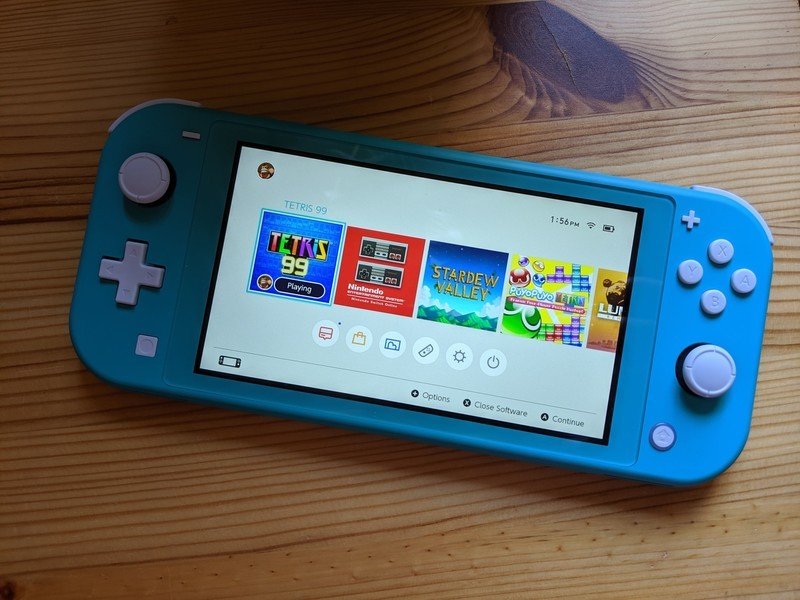
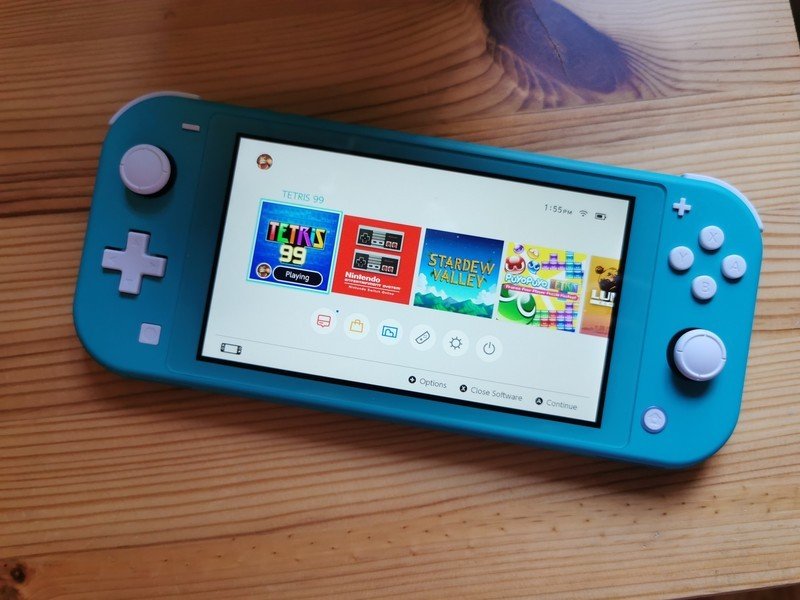


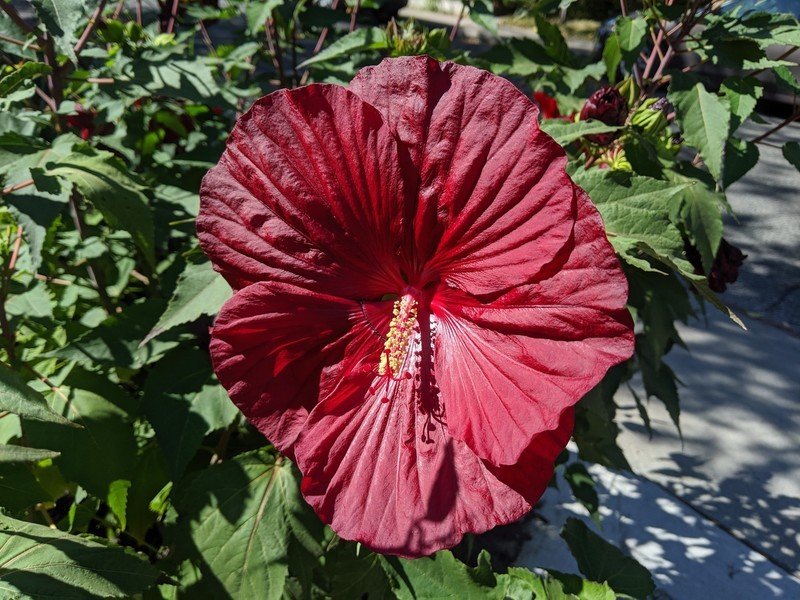
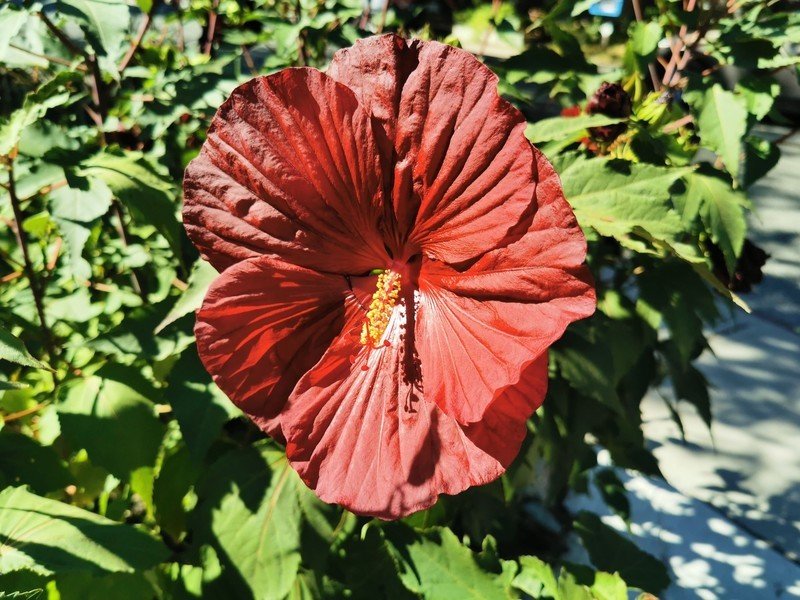
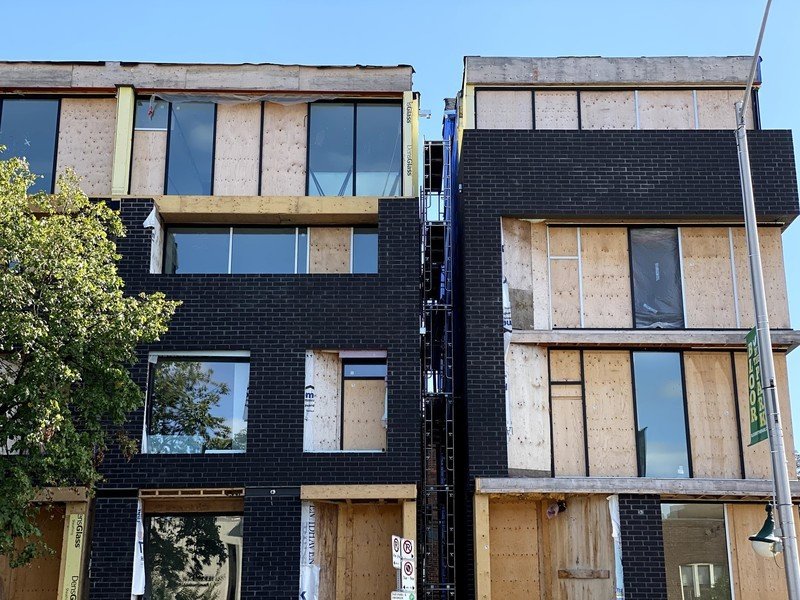
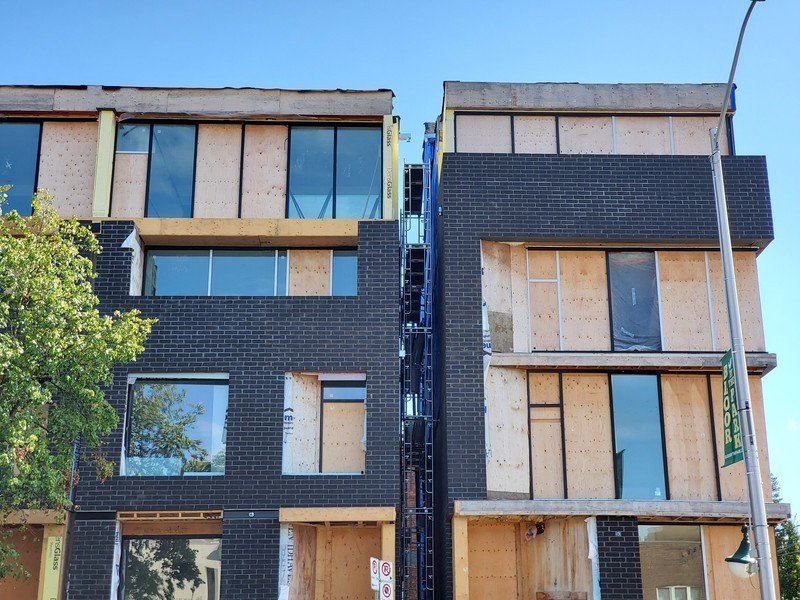
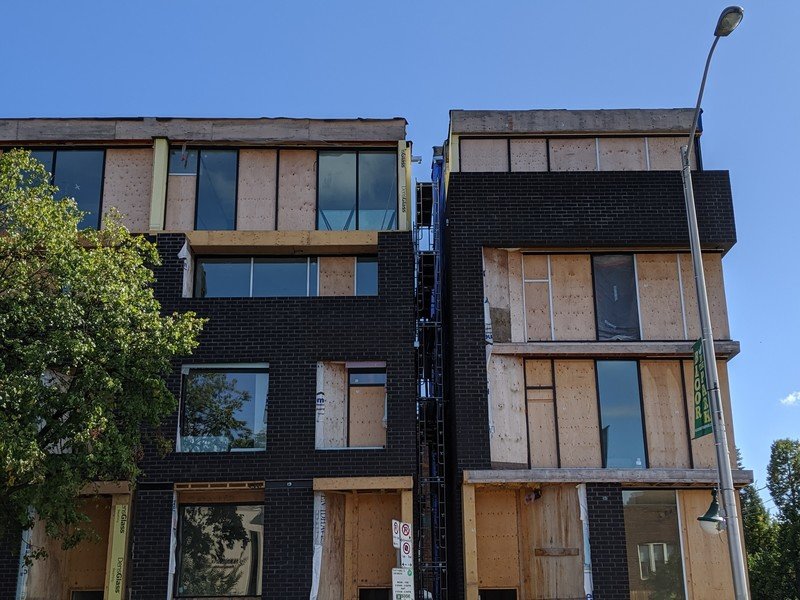
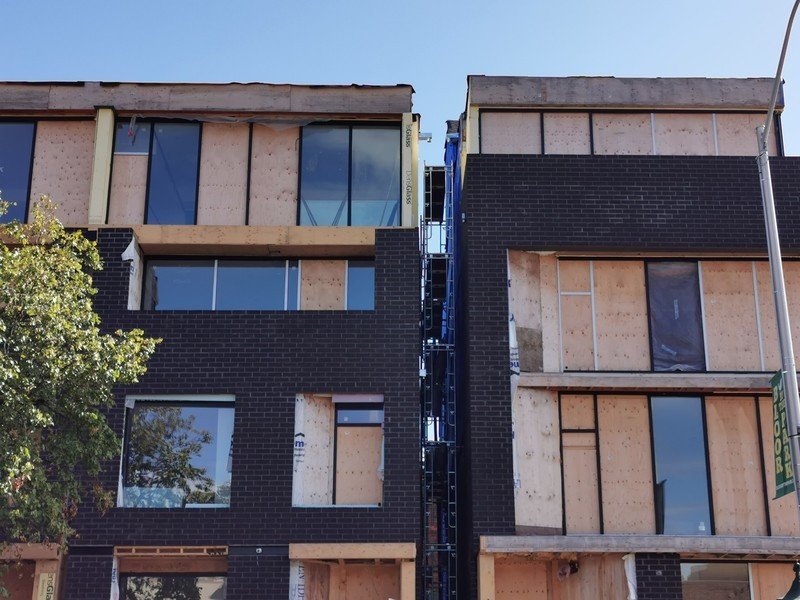
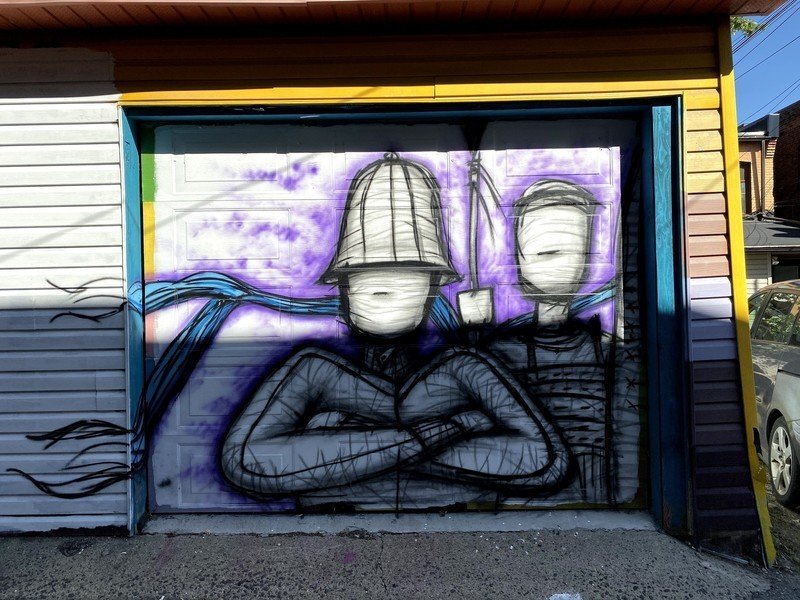
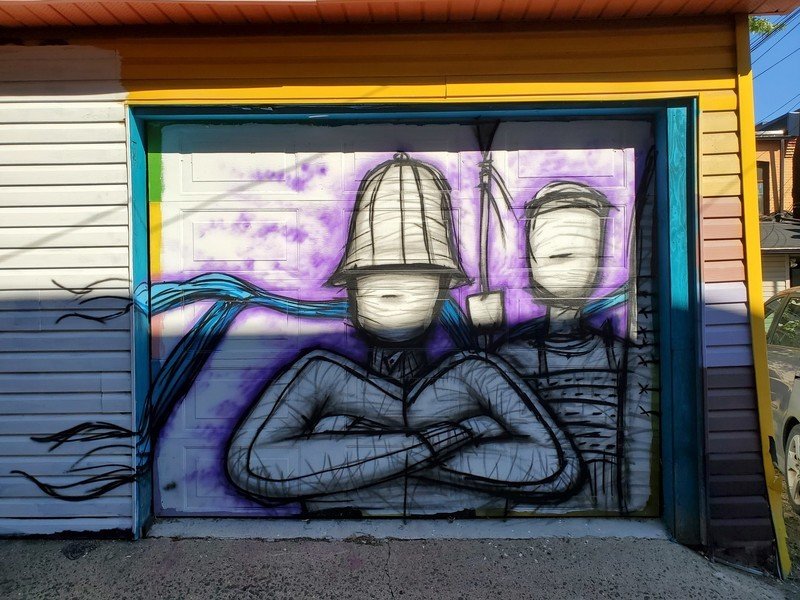
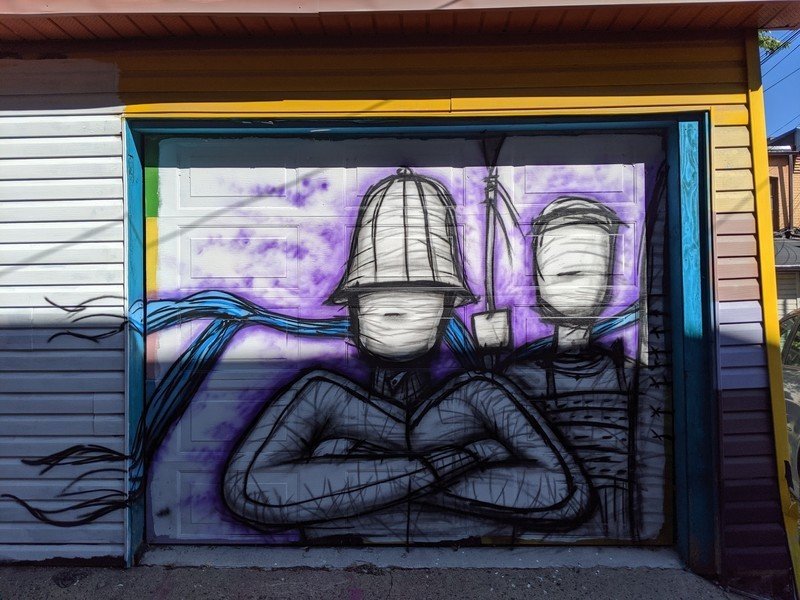
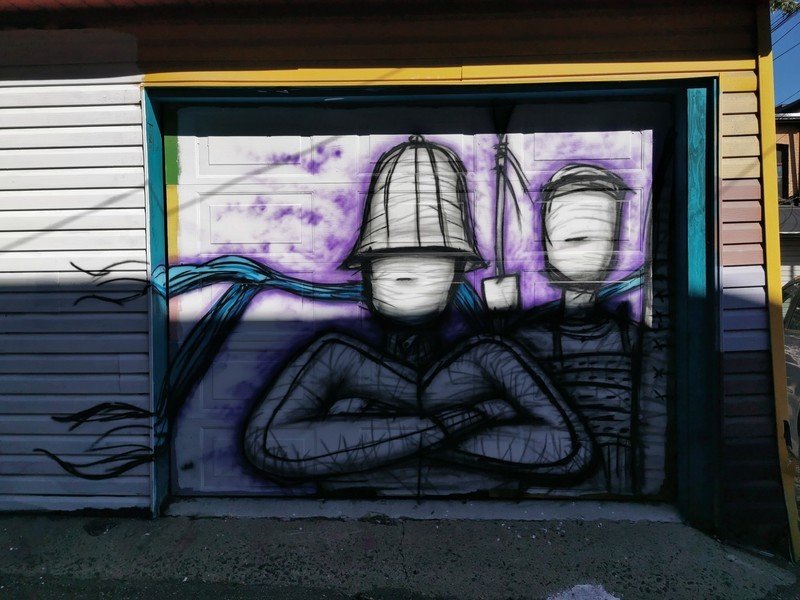
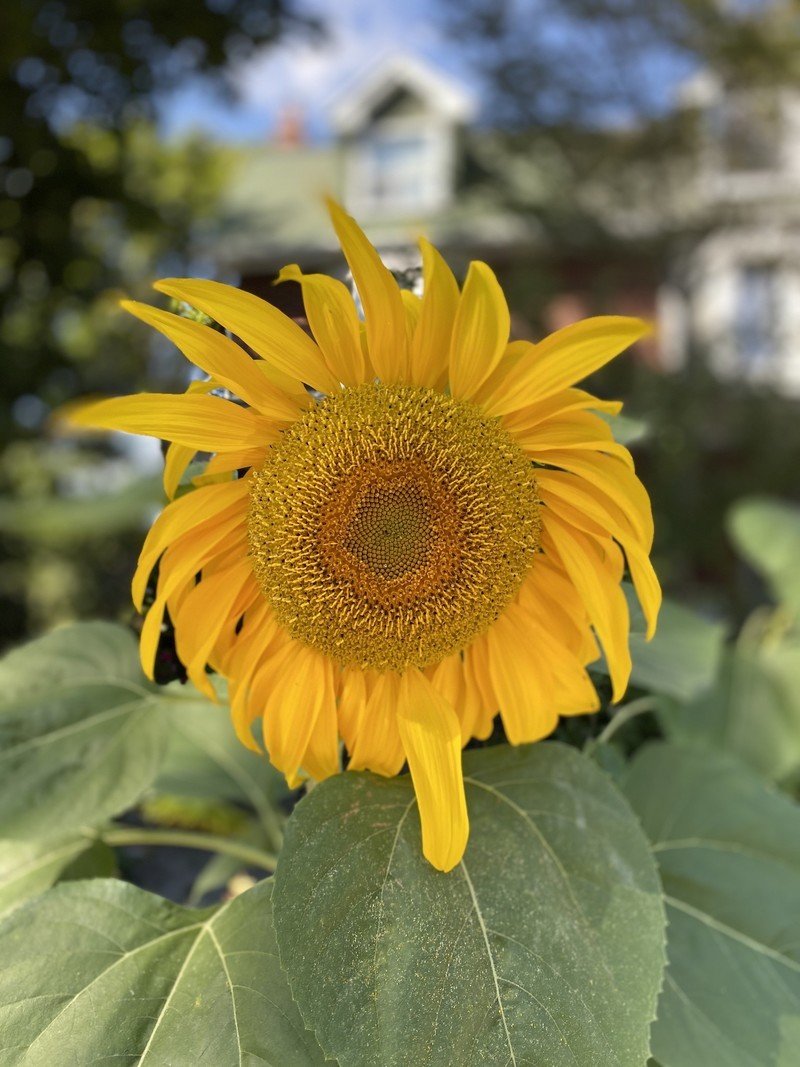
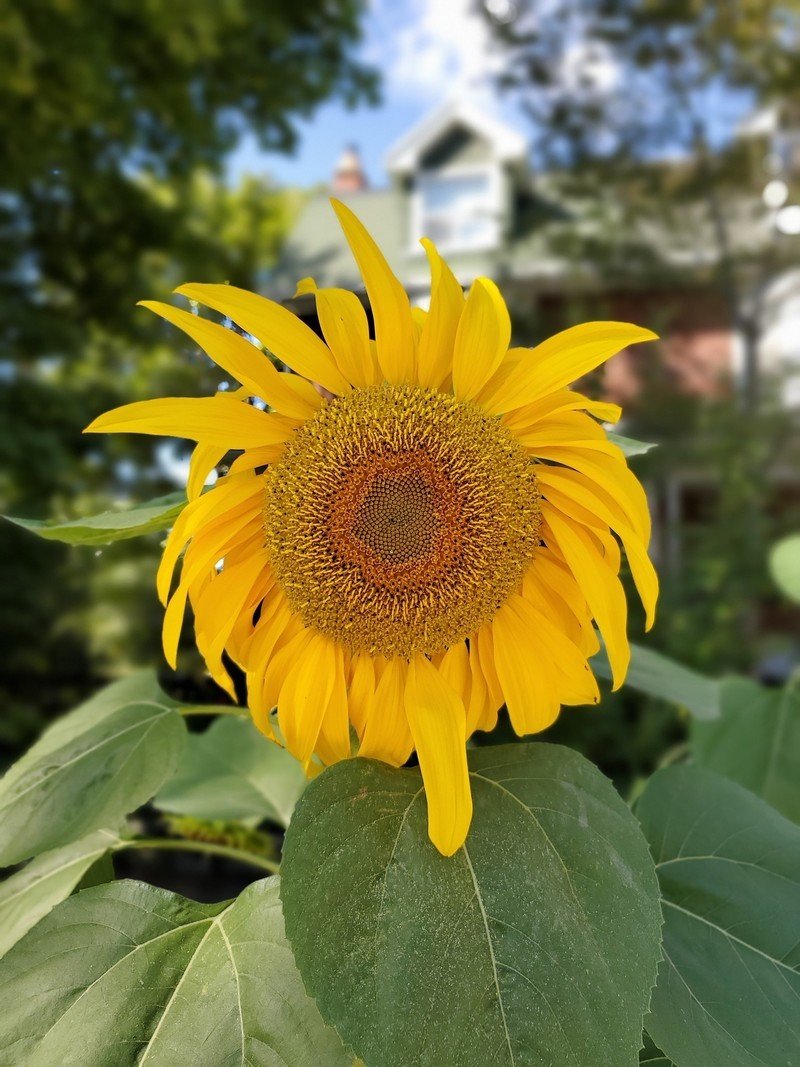
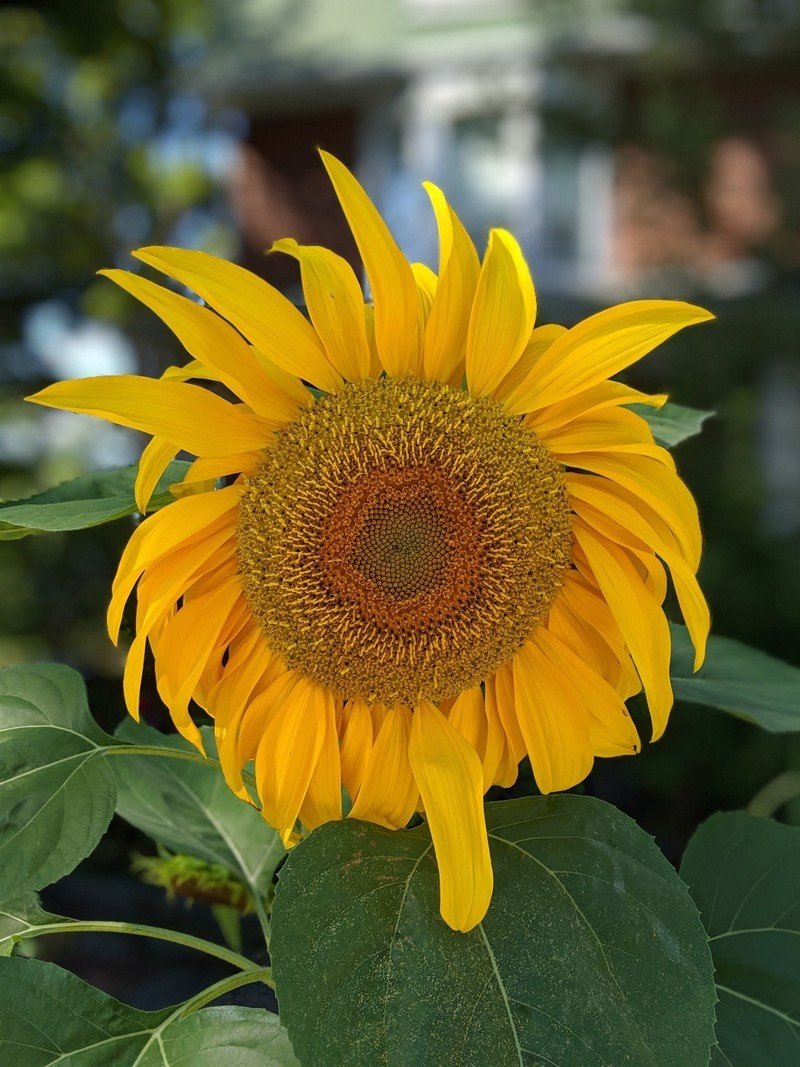
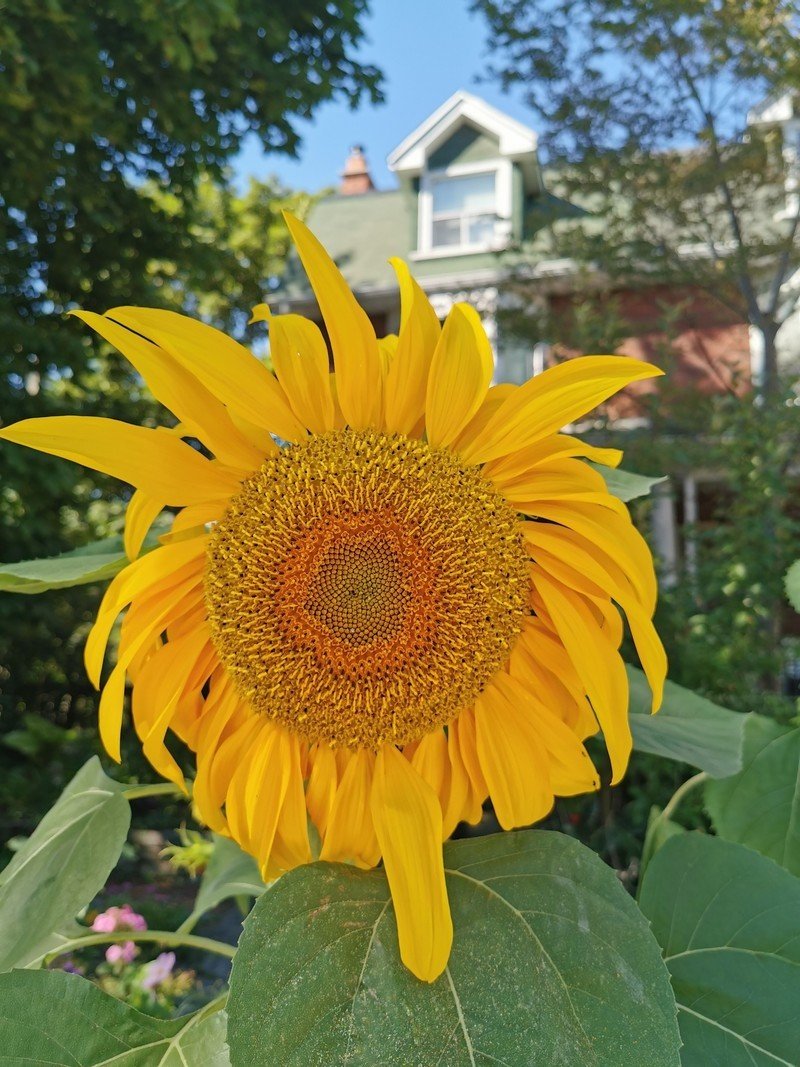
The iPhone strikes a great balance of being natural and cranking things up selectively to stay visually interesting
The iPhone 11 Pro does an excellent job of striking a balance between looking "natural" and cranking things up selectively to be visually interesting. White balance and colors are both spot on, as are brightness and fine details — you get sharp edges, but also texture. Of these comparative photos, the only real flaw to speak of is the portrait mode shot of the flower, where it completely misses on edge detection and applies blur to the subject in a way that completely wrecks the effect.
On the opposite end of the spectrum is the Note 10, which very clearly throws out balance and nuance in favor of contrast and pop. Photos tend to be warmer, with more contrast and saturation that really grabs your attention. This typically also comes with higher brightness and more of a classic "HDR" look — but that isn't really a bad thing, because people are obviously drawn to this style. And Samsung does get the rest of the fundamentals, with very sharp fine details.
The Pixel 3 is by far the most natural, but I just wish it would turn up the brightness or colors just a little in certain scenes.
The Pixel 3 is far and away the most natural, accurate and lifelike of the bunch, as we've seen time and time again. It really nails colors and white balance, and is happy to let shadows continue to exist. Unfortunately not everyone's eye is drawn to this sort of photo; and I'll admit there are many times when I wish it would just up the brightness a little so it wouldn't come off looking so bland — even if it's far less noticeable when not looking at photos side-by-side. The Pixel 3 photos are fundamentally so good, but I think they could use a little more opinionated processing to really make photos pop.
Be an expert in 5 minutes
Get the latest news from Android Central, your trusted companion in the world of Android
The P30 Pro takes an approach a bit more like the Note 10, with lots of contrast and saturated colors with the aim of being really appealing at a glance. Though it seems to keep the brightness in check more than Samsung. With the exception of really missing the reproduction of the red color of the flower above, the colors and white balance are generally accurate. The only real downside I can find with the P30 in daylight is softness in fine edges, which is a little off-putting compared to the other three cameras that are tack-sharp in so many instances.
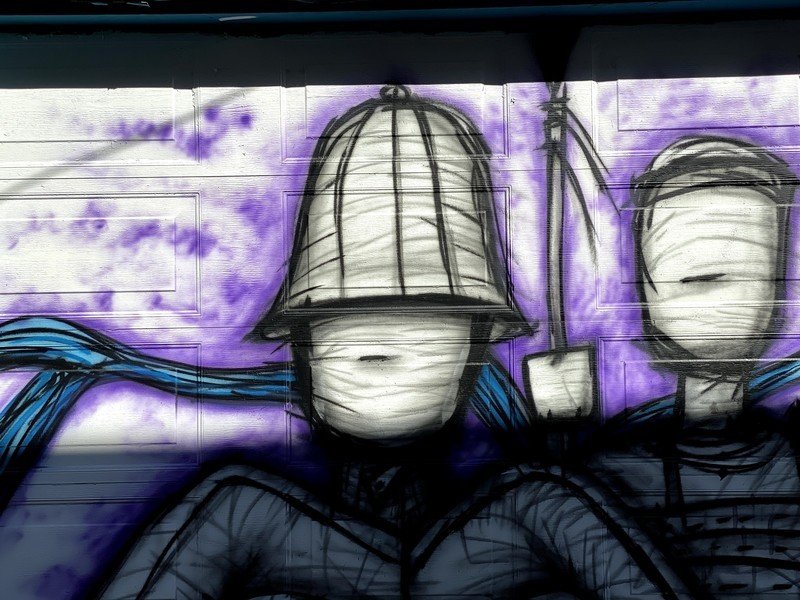
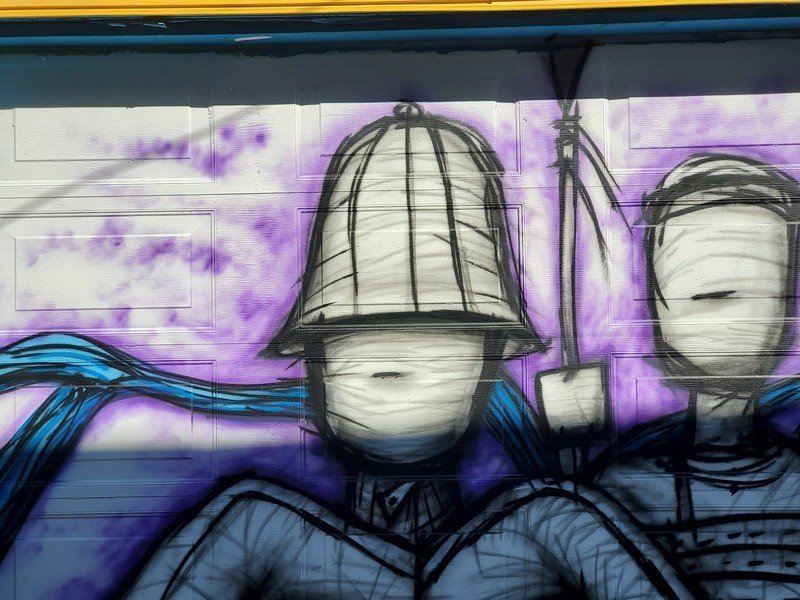

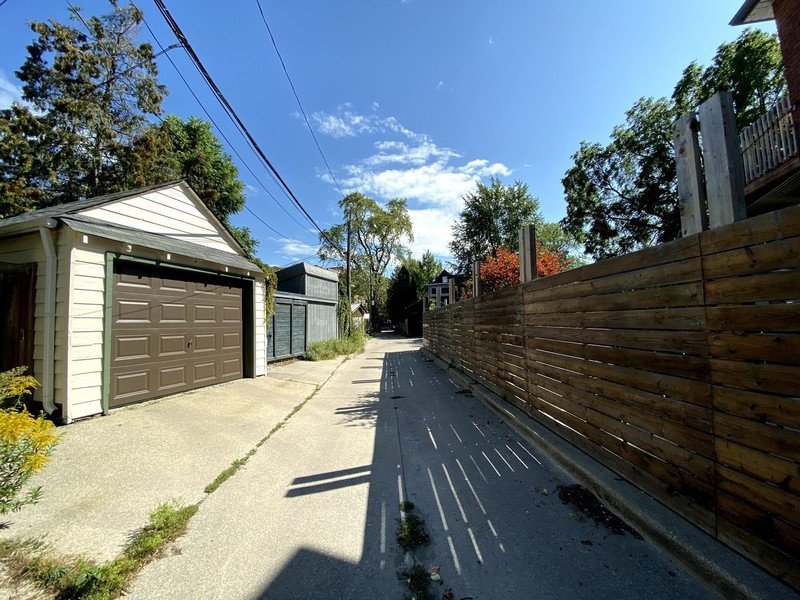
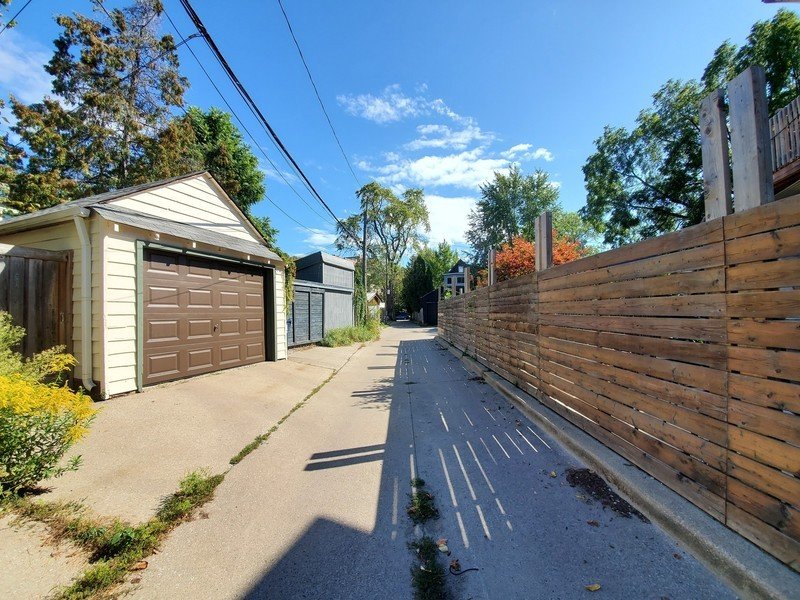
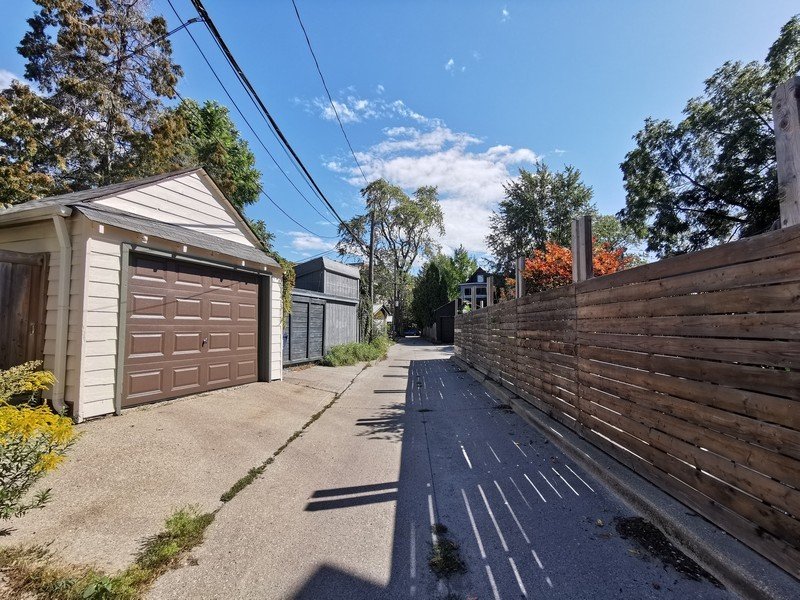
The iPhone 11 Pro and Note 10 both have good telephoto cameras, but the iPhone handles things a bit better with seemingly more details and a better consistency with its main camera. The Note 10 does well, and still produces warm and colorful photos, but out-and-out detail isn't quite as high as the iPhone 11 Pro — there's a bit more softness to the whole image on the Note.
The iPhone 11 Pro is the most consistent across its three cameras, but all three phones do well in daylight.
The P30 Pro automatically gets a leg up in telephoto because it offers more optical zoom — that gives you a more unique look, and reduces the amount you have to digitally zoom. And in daylight, you get great quality even at the higher zoom levels. Sure we don't take as many telephoto shots as we do main camera shots, but this is still one feather th P30 Pro keeps in its hat.
Each of the available ultra-wide cameras follow their "main" sensor counterparts. The iPhone 11 Pro is perhaps the most consistent between the sensors, with wide-angle shots that are more balanced across the board. The Note 10 is, like its main sensor, more colorful and saturated. The P30 Pro is a bit more on the neutral and muted side. All three have considerable distortion around the edges that's easy to see — but that's also kind of part of the appeal of the unique wide-angle viewpoint. All three get the job done in daylight.
Low light
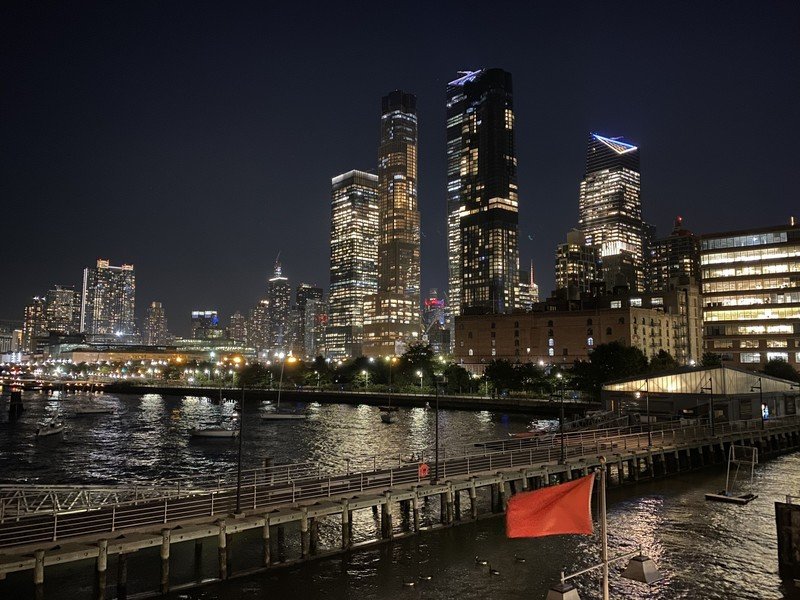
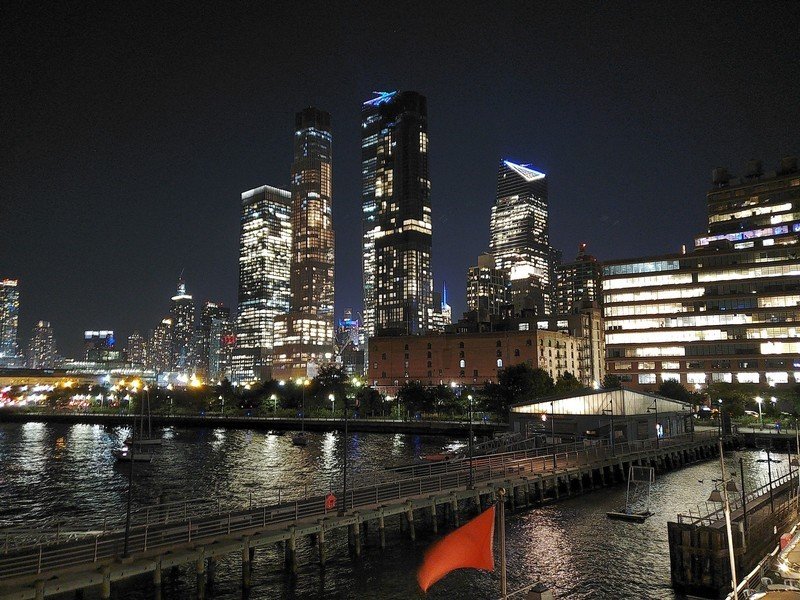
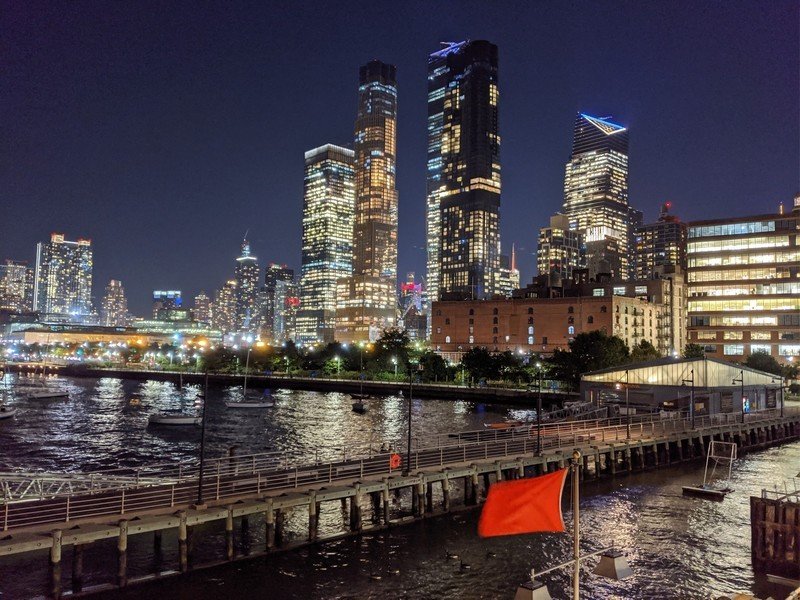
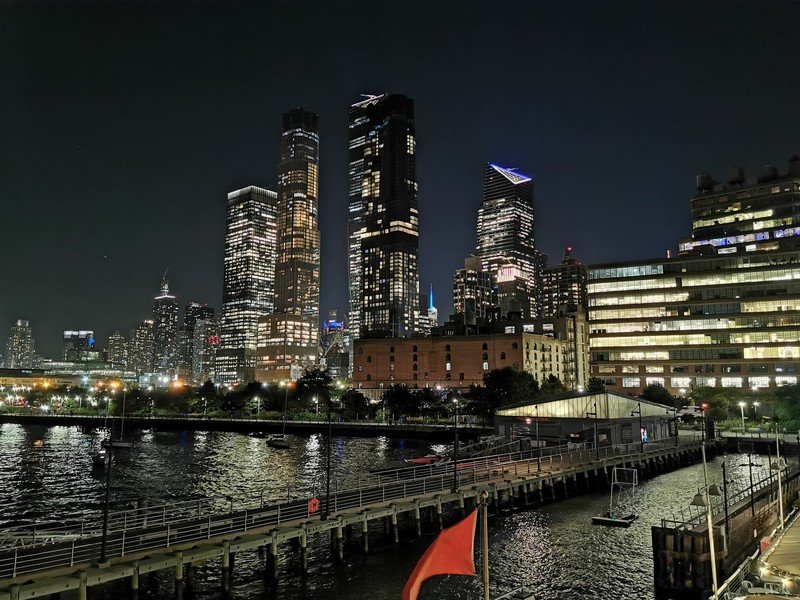
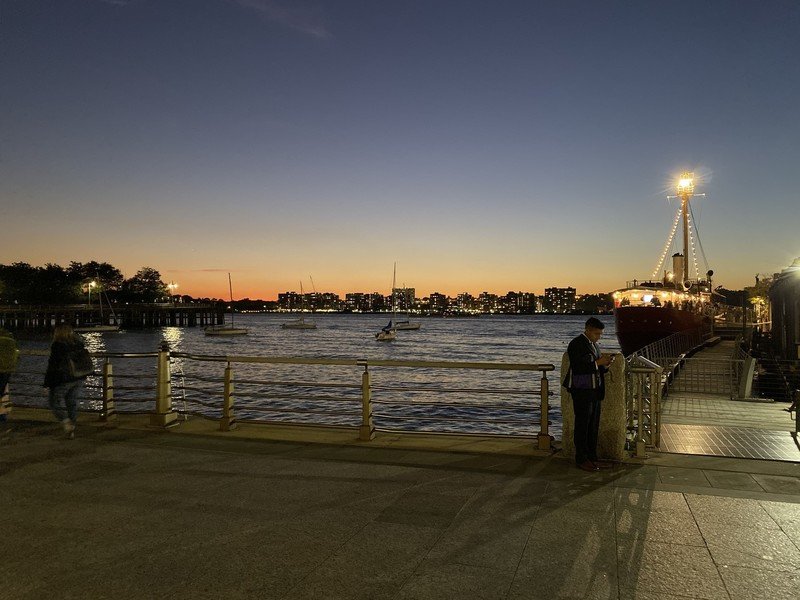
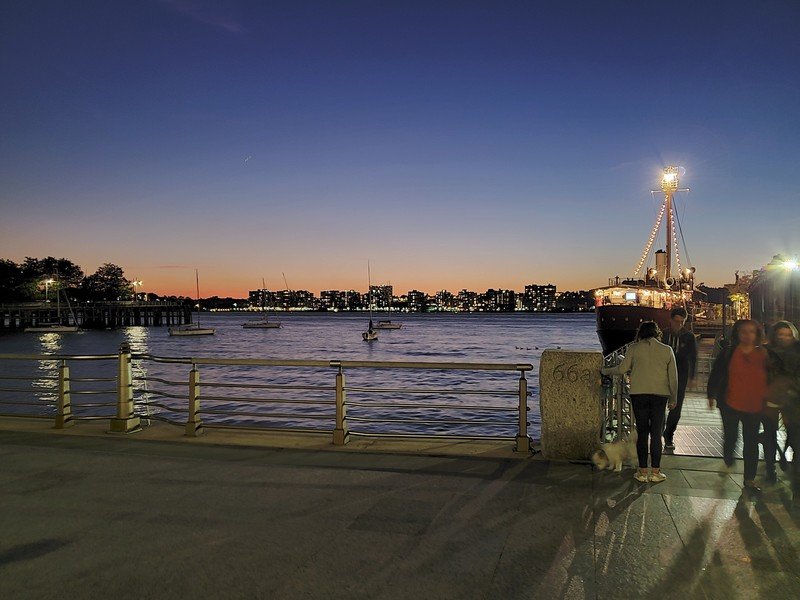
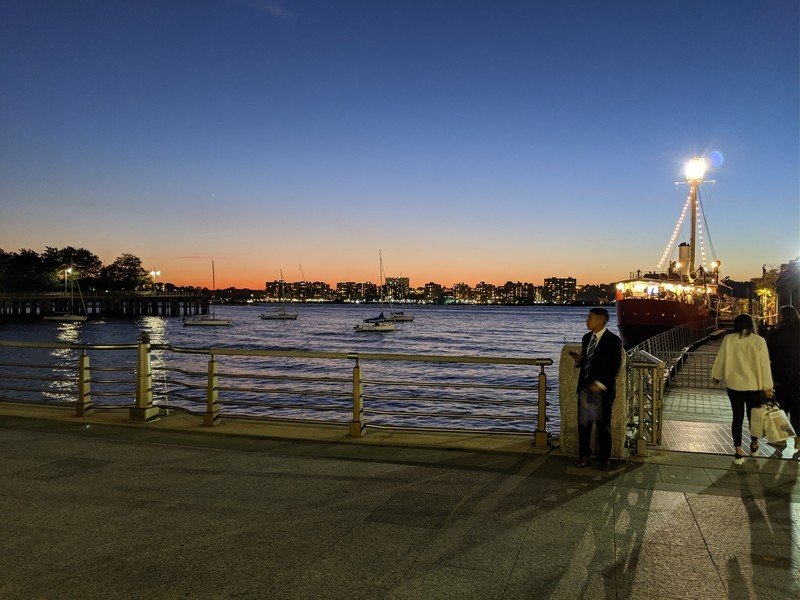
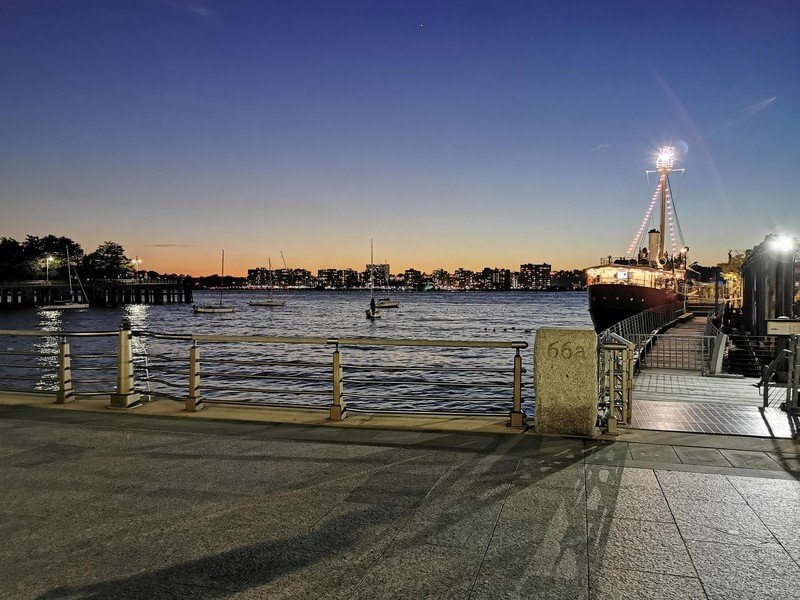
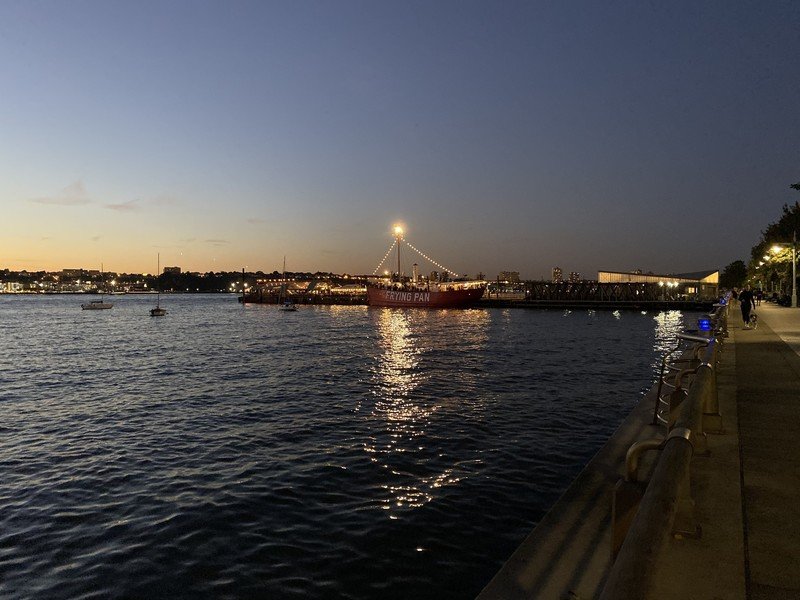
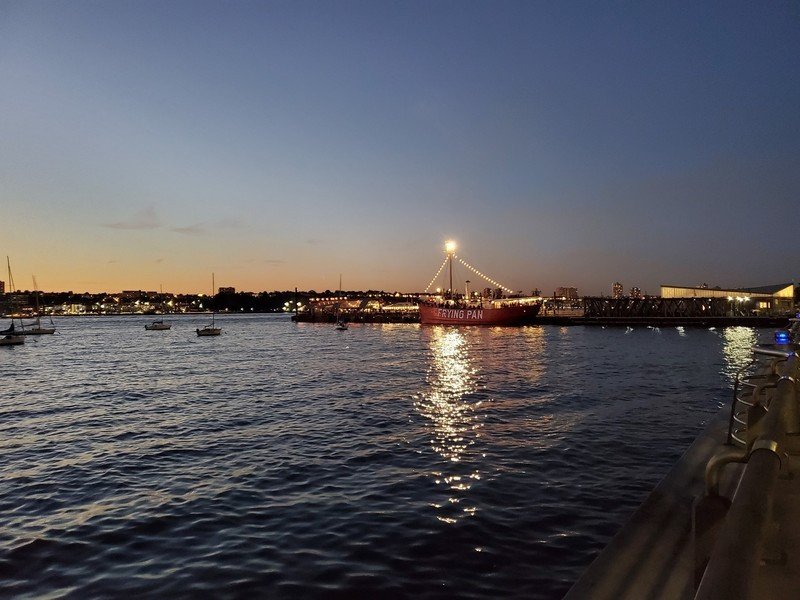
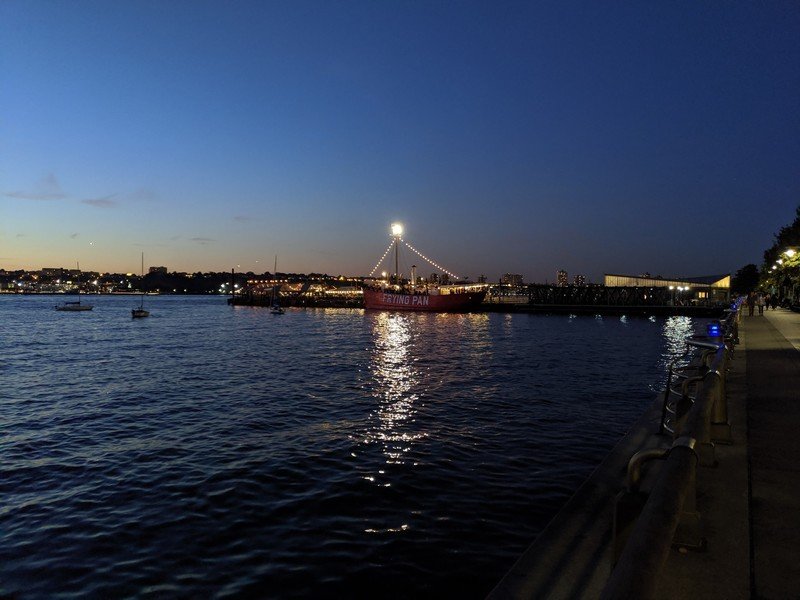
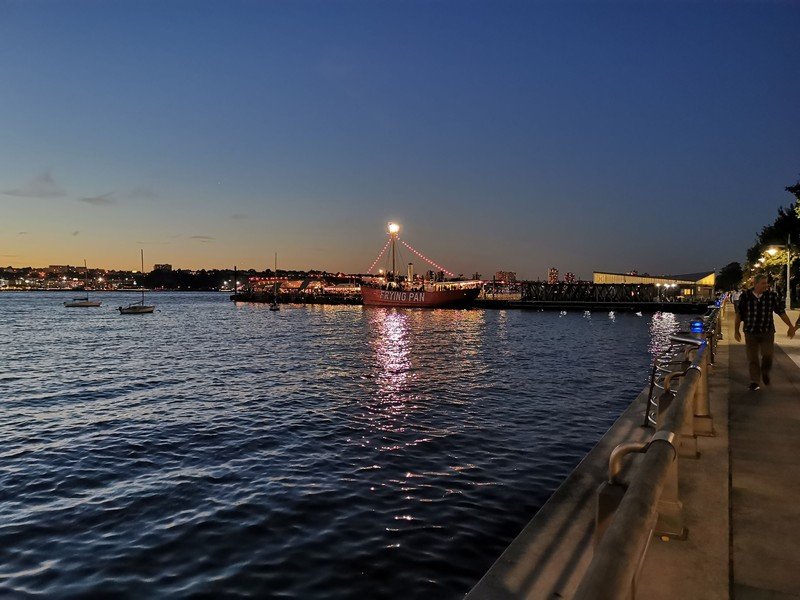
The Note 10 is clearly the weakest of the group in low light, lacking the same level of specialized processing as the others.
Apple made big strides in low-light photos with the iPhone 11 Pro. Most of the characteristics displayed in daylight now also carry over to nighttime, with a natural look that retains colors while generally accurately representing the scene. There's obviously smoothing being applied here, but not a ton — you get a pretty good balance of noise reduction and detail preservation. Compared to the rest of the cameras you don't get the stunning colors, but that's a decision Apple obviously made in favor of keeping things relatively realistic.
The Note 10 is clearly the weakest of the group in low-light scenes. In really dark environs, you get a considerably grainier photo, with areas of chroma noise (blotchiness) — this is often a result of Samsung's software trying too hard to brighten images by cranking up the ISO. Colors are actually retained pretty well, so when you view the images on smaller screens they look fine, but set next to the iPhone 11 Pro, for example, there's little comparison to draw.
The P30 Pro hits the middle of the road with HDR-like processing bringing up brightness and colors, but coming up short of Night Sight.
The Pixel 3 has a seemingly legendary status in low-light photography thanks to Night Sight, and that's (mostly) still the case a year on. Night Sight still produces photos that are incredible — and in contrast to its daylight photos, they're incredibly bright and colorful in a way that is not natural. You're getting a photo that doesn't actually represent what you see with your eyes, which is both impressive and also off-putting to some. The amount of clarity and smoothness across the scene is fantastic, but that also leads to over-smoothing that can sometimes fully remove details that are otherwise seen in shots from the iPhone and P30 Pro. But given the choice between over-smoothing and leaving high-ISO grain in the photo, I'd definitely take the former.
The P30 Pro holds its own at night with an approach between the iPhone and Note 10. Colors, saturation and brightness are all cranked up, but the processing does a much better job of smoothing and retaining detail than the Note. In many cases, you get a more traditional "HDR" look where shadows and highlights are turned up, which seems to lack some of the subtlety of what the iPhone 11 Pro is doing but is visually appealing nonetheless. In many cases, it's able to brighten a scene in the same way as Night Sight — for better or worse, depending on your perception of what a "night" photo should be.
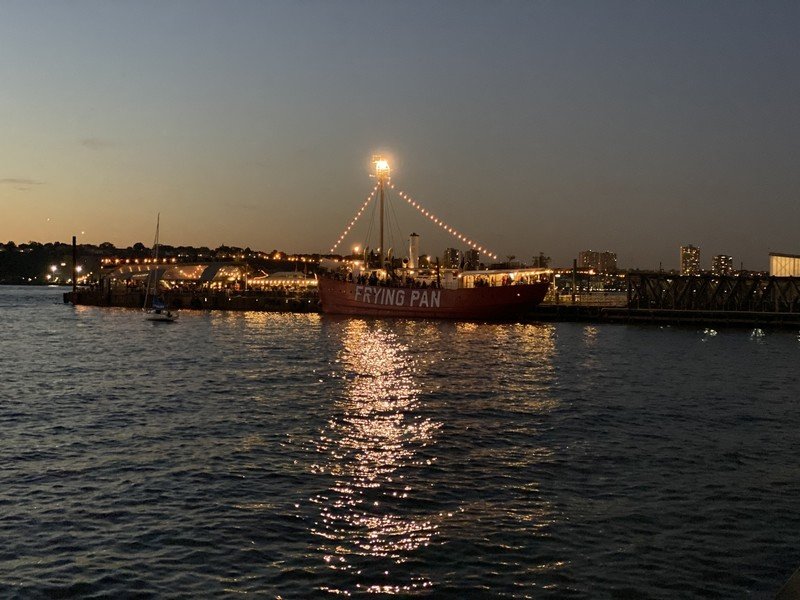


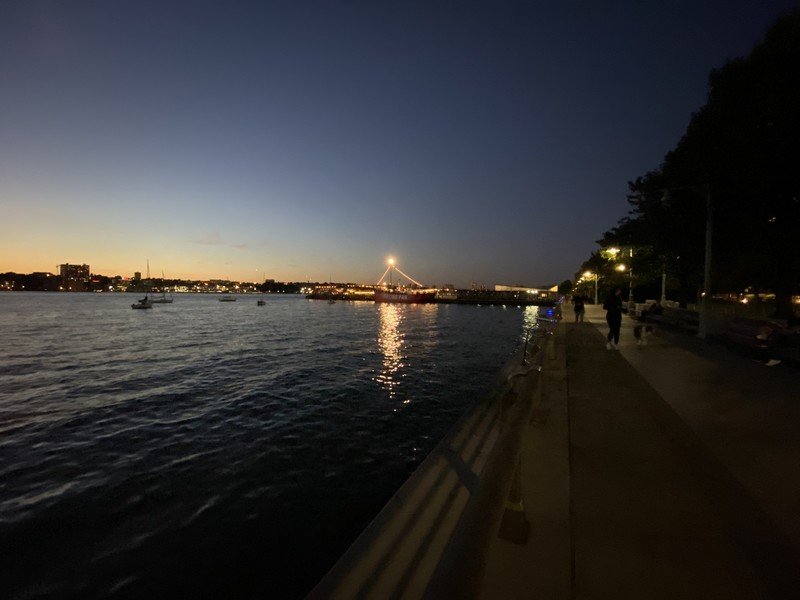
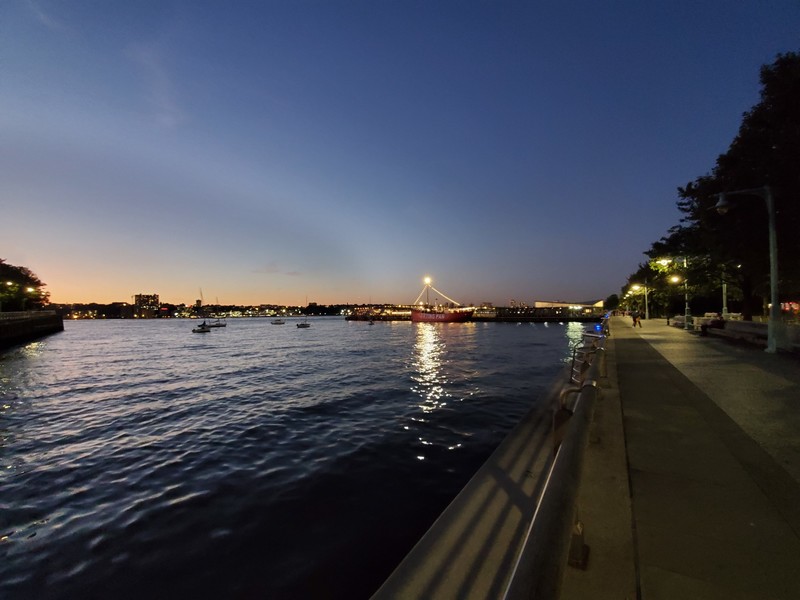
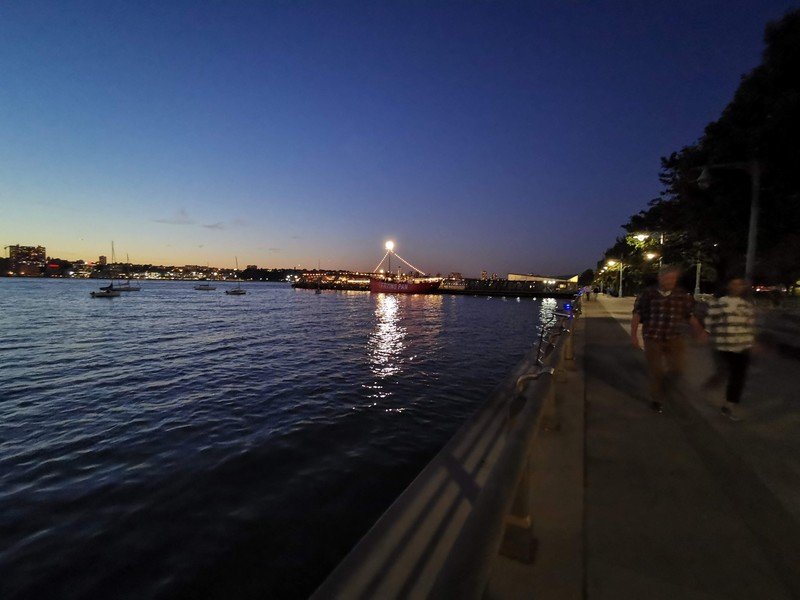
It's worth noting quickly that the telephoto and wide-angle cameras available on three of the four phones here offer greatly diminished experiences in low light.
It's worth noting that the telephoto and wide-angle cameras on all three phones are still quite bad at night.
When it comes to "telephoto" lenses, the iPhone and Note are about the same — colors are retained, but details are softened considerably and that really hurts the look across the entire scene. The P30 Pro obviously offers a different perspective with its longer focal length, but in this sort of super-dark scene above it doesn't reward you with particularly high quality at the same time. All three lose detail and brightness with zoom; enough so that you'll think twice before shooting with the telephoto lens at night.
When it comes to wide-angle shots, all three are pretty bad compared to the high standards set by their main cameras. The iPhone 11 Pro is really soft. The Note has a different color profile and is of course over-exposed. The P30 is the most colorful of the bunch, but still considerably more grainy than the main camera.
Which camera is best?
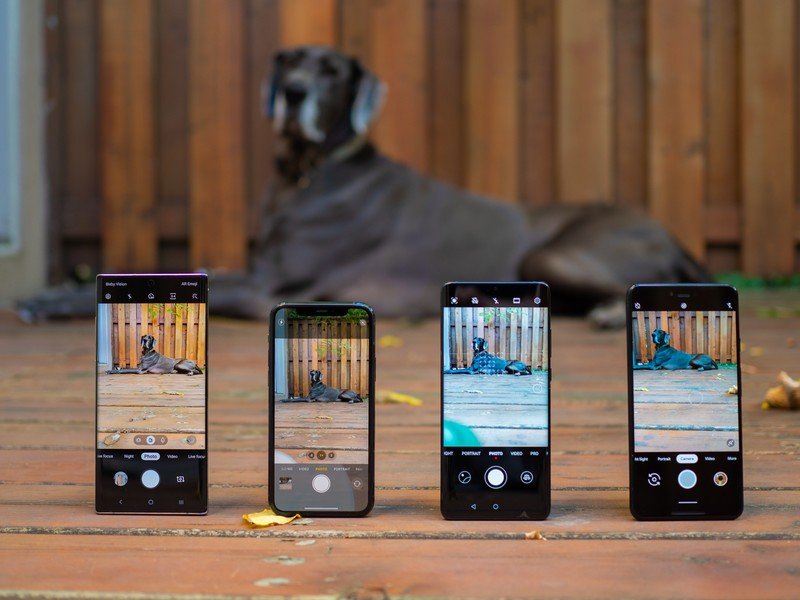
If you're going to pick a phone purely based on its camera, which one do you go with of these four?
Generally, all four cameras handle varied daylight scenes just fine. If you weren't looking at them side-by-side, you'd be hard-pressed to find any real flaws in any given photo. Portrait mode is always going to be one area where there can be straight-up stumbles, but in full auto mode shooting any daylight scene, each of these cameras does well. The iPhone 11 Pro is incredibly consistent and accurate, the Note 10 is contrasty and eye-catching, the Pixel 3 is neutral and accurate; and the P30 Pro strikes a balanced look somewhere between the Note and iPhone.
These are the four best cameras right now, but the Pixel 3 and iPhone 11 Pro stand out most across the board.
In low-light photos, there's a clearer delineation: the iPhone 11 Pro and Pixel 3 are clearly better than the P30 Pro and Note 10. The iPhone 11 Pro keeps a balanced and good-looking profile even in lower light, while the Pixel 3's Night Sight creates bright and brilliant photos that you can't get with any other phone. Both do so without introducing a bunch of grain or anomalies and are consistent in a variety of incredibly dark scenes. The P30 Pro is close to those two, but doesn't seem to have as much nuance in its processing — it just has solid reproduction with some improved colors and brightness. The Note 10 is the furthest out, with seemingly little specialized low-light processing — you get fine photos, but ones that clearly have too high of an ISO and lots of grain.
There's obviously far more to the comparison of these four phones, but if you're going to pick, the iPhone 11 Pro and Pixel 3 are clearly better when you weigh both daylight and low-light performance. The Note 10 and P30 Pro are on equal, but slightly lower, footing to my eyes with the Note 10 taking the edge in daylight and the P30 Pro winning in low-light. The biggest takeaway for me is these four are the best of the best right now, and you're going to take amazing photos with any of them if you know how to handle them properly.
Andrew was an Executive Editor, U.S. at Android Central between 2012 and 2020.


